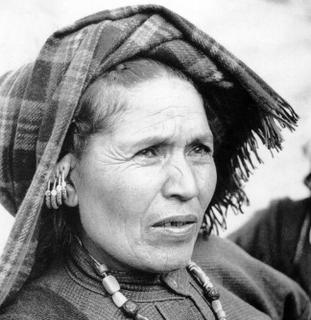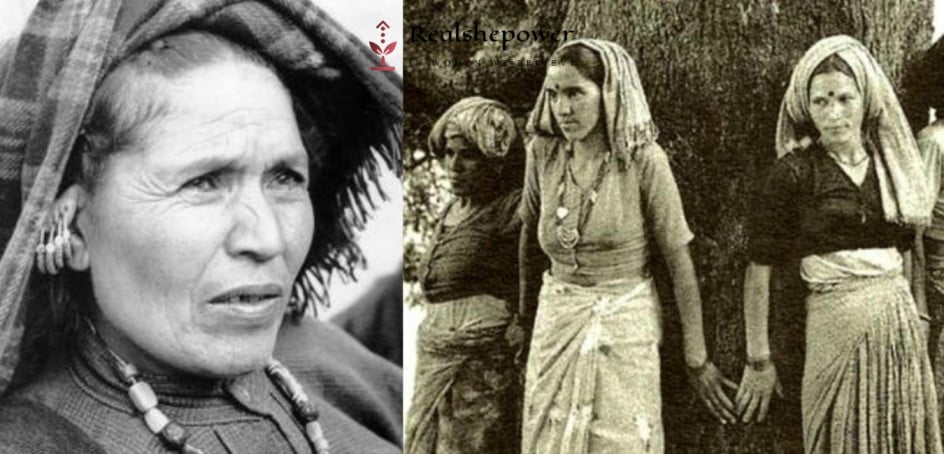The Indian state of Uttarakhand (then Uttar Pradesh) saw a new surge of development in the 1960s in the form of interior highways in rural Himalayan areas, attracting numerous foreign-based logging corporations. These corporations, however, exerted control over the region’s rich forest resources, overpowering the rural communities which relied largely on these resources for their livelihood and survival.
As a result, the rural population sought to fight against government-backed logging. This led to a series of protests which took shape as a non-violent environmental and social movement. Many of us are cognisant of the Chipko Movement since it has now become ingrained in the Indian consciousness.
However, very few are actively aware of the contributions and bravery of the heroic woman who defied the government and its powerful bureaucrats to conserve the beloved trees in their community.

Gaura Devi, at the time, took 26 other women into the woods late at night to face the forest company’s workers who were going to cut the trees down and challenged them to use their axes. With support from the group, she managed to halt the work of the loggers by hugging the trees despite abuse and threats of violence. The women of village and Gaura Devi kept guard of the trees that all night. Over the next few days, many more villagers joined in the protest
Gaura Devi, the environmentalist whose courage defined the Chipko movement, was a living icon. As a local resident, she rallied the women in the vicinity to fight the loggers, and their joint efforts saved more than two thousand trees from being felled. The campaign became a focal point for subsequent peaceful conservation movements in India, while also garnering global attention.
It is perhaps hard to come by any other community-led resistance effort in the history of environmental activism that has the same kind of lasting influence in society as the Chipko movement did. The Chipko movement, which began in 1973 as a protest opposing tree chopping and grew all across the Himalayas, was motivated by the Gandhian ideals of non-violent resistance.
The campaign gained traction throughout the nation, and the central government enacted the Forest Protection Act, a statute to control the felling of trees in an effort to save them. In contemporary times, when the subject of chopping trees for the sake of “growth” and industrialisation had re-surfaced, the significance of Gaura Devi in forest conservation needs to be remembered again.

Born in 1925, Gaura Devi belonged to a tribal family in the Lata village of Chamoli district in Uttarakhand. At the age of 12, she was married to a family in the neighbouring village of Raini. However, tragically, at the age of 22 she lost her husband with the responsibility of the entire household and an infant child on her young shoulders.
Trained only in her family’s wool trade, she naturally took charge of the trade. The women of Raini grew fond of her and admired her courage and resilience in the face of adversity. Her involvement in forest conservation inspired other women from the village to ask her to lead the Mahila Mangal Dal. The purpose of this initiative was to maintain the village’s cleanliness and to conserve the trees in the forest and other natural resources.
The Chipko Movement had already started to gain momentum by then. Gaura Devi was driven by the movement to launch a number of initiatives in adjacent villages to highlight the value of the conservation of trees.
Also read: Remembering Chipko Movement: The Women-led Indigenous Struggle
Although Gaura Devi was not educated in a formal manner, her experiences provided her wisdom and awareness towards women’s issues, prompting her to become involved in the workings of the Panchayat, and other social activities. Rawat adds, “The environment movement she started made India realise the importance of forests and sustainable development, especially in the Himalayan region where it was the first such movement. It created awareness on the importance of forests and inspired many policy changes and people to fight for the cause of forests and local ecology“
Gaura Devi, according to renowned historian Ajay Singh Rawat, the author of numerous books on Uttarakhand’s local ecosystems and environmental conservation, was a leading figure in the Chipko movement which began in March 1974 when contractors hired by a sports equipment organisation from Allahabad came to Raini village to cut down trees.
Gaura Devi, at the time, took 26 other women into the woods late at night to face the forest company’s workers who were going to cut the trees down and challenged them to use their axes. With support from the group, she managed to halt the work of the loggers by hugging the trees despite abuse and threats of violence. The women of village and Gaura Devi kept guard of the trees that all night. Over the next few days, many more villagers joined in the protest.
Consequently, the Uttar Pradesh government set up an expert committee to look into the issue of felling of trees, and the company withdrew its men from Reni. The committee found that the forest is an ecologically sensitive area and stated that no trees should be felled there.
Rawat says, “She changed our attitude and outlook towards forests. Her fight to save her forests also showed what villagers can do to save their green wealth from the commercial interests if they are determined to do so.”
Although Gaura Devi was not educated in a formal manner, her experiences provided her wisdom and awareness towards women’s issues, prompting her to become involved in the workings of the Panchayat, and other social activities. Rawat adds, “The environment movement she started made India realise the importance of forests and sustainable development, especially in the Himalayan region where it was the first such movement. It created awareness on the importance of forests and inspired many policy changes and people to fight for the cause of forests and local ecology.”
Chipko‘s social, ecological, and political repercussions were audible and enormous. The Indian government rewrote its forest policy and rules, as well as the objective of its forest department.

Women’s roles and relevance in environmental conservation is instrumental in the way these efforts have shaped up. Their participation in preservation and sustainable development is something that is often very less documented. While the long-term struggles of so many individuals in the movement cannot be condensed into a single spectacular event, it is indisputable that Gaura Devi and the other women played a vital role in sparking the Chipko movement into its velocity. She passed away in July 1991.
Gaura Devi symbolises the need for ethical environmental preservation, women’s self-confidence and space in the dialogue, and the indigenous peoples’ determination to protect their ecosystem. But whether or not her legacy has been honoured through consistent efforts of environmental consrvation is debatable.
Also read: In Conversation With Dr Vandana Shiva: Chipko Taught Me Humility
Featured Image: RealShePower
About the author(s)
Poulomi is a Master's scholar from Jamia Millia Islamia, New Delhi, who loves to scribble poetry and write essays just when she can't seem to hold it all in. Her research interests include feminist studies, postcolonial theory, trauma and disability studies. She is very eager to read anything she can get her hands on, when she is not obsessing over spicy food or sleeping





